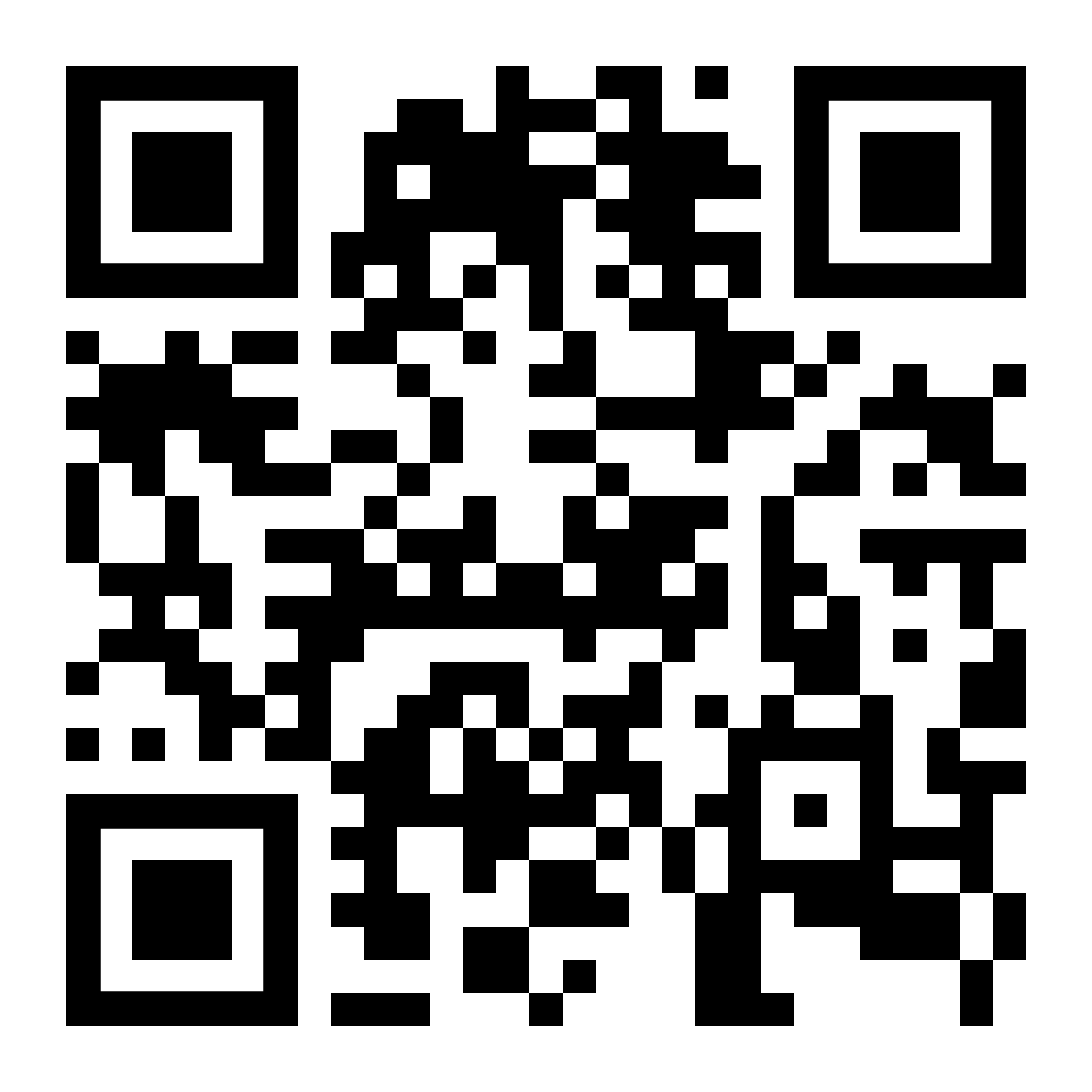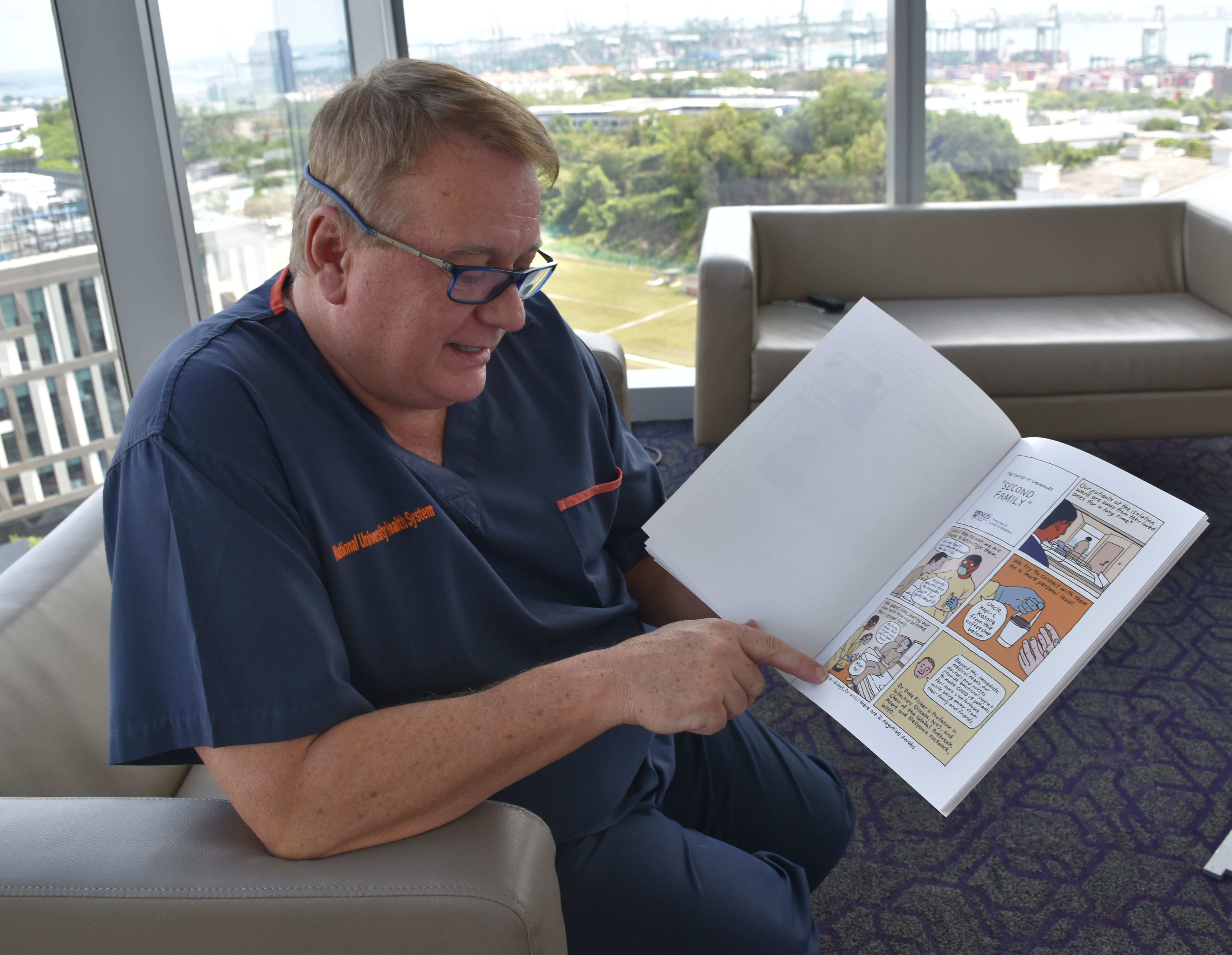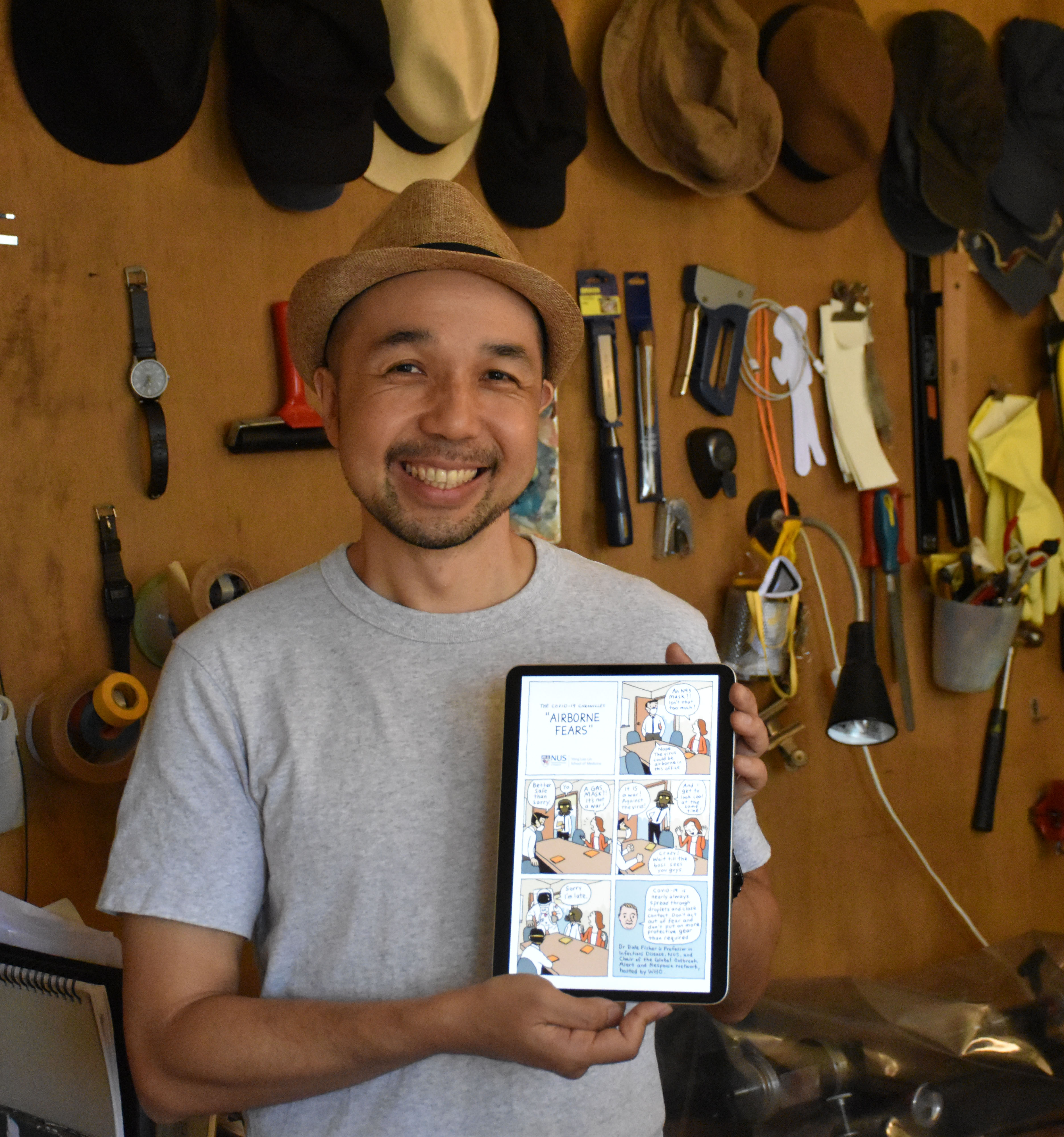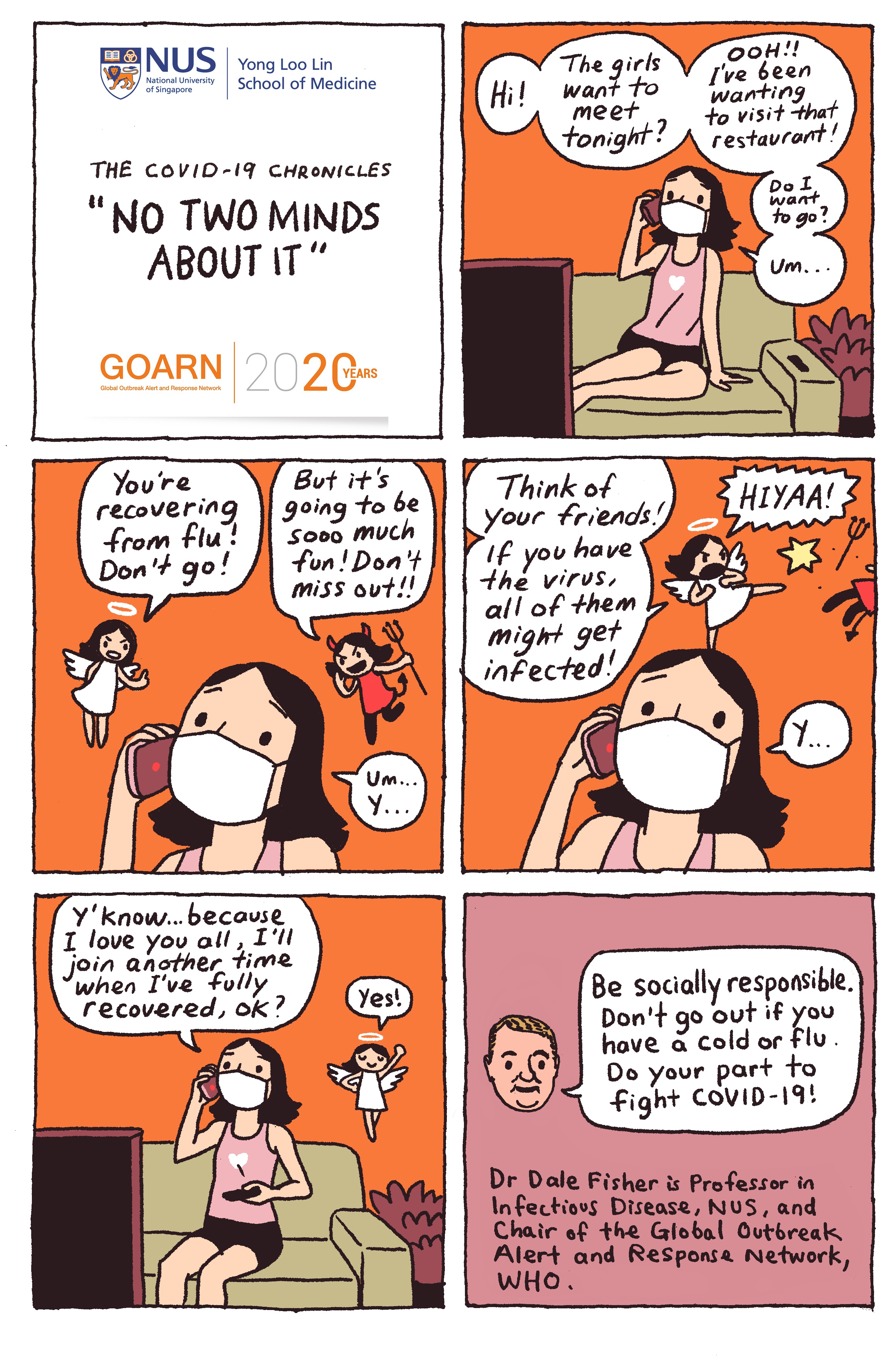Thoroughly Infectious: The COVID-19 Chronicles
LAUGHTER IS THE BEST MEDICINE
COVID-19 has been dominating world headlines since the start of 2020.
With a deluge of information (and misinformation) about the disease contributing to mounting global fear, public health education about the novel coronavirus is crucial. It prompted the NUS Yong Loo Lin School of Medicine to team up with the Global Outbreak Alert and Response Network at the World Health Organisation (WHO) to calm feverish minds and help sort out fact from fiction.
The treatment plan?
A strong, sustained dose of comic strip humour.

Scan QR code to view video
More strips online:
A NEW ‘INVISIBLE’ ENEMY STRIKES
When the virus made its first appearance in December 2019, Singapore braced for impact. A well-connected transport and business hub which is home to more than 5.8 million people cannot but be open to the world. The country saw its first confirmed case of infection on 23 January this year. The long weeks and months since have seen the government introducing a series of precautionary measures aimed at keeping Singaporeans safe while attempting to flatten the epidemiological curve through the promotion of hand and personal hygiene, mitigation of mass crowding and controlling of border movements.
As the tally of confirmed cases grew day by day—a sign that the coronavirus was staking its insidious flag in countries across the globe—instant noodles, toiletries and disinfectants became objects of panic buying, becoming as coveted as hand sanitisers and face masks were in the early days of the outbreak.
Meanwhile, life as we know it has been disrupted and the world has to ride out waves caused by the pandemic.
THE CHALLENGE: EXPLAINING COVID-19
In the face of this unprecedented crisis, clear public health messages are critical to inform, educate and even calm people, not only so that they keep in good health, but so that everyone understands and complies with evolving precautionary health measures aimed at breaking the chain of transmission and preventing new cluster outbreaks in communities, said Professor Chong Yap Seng, Dean of NUS Medicine. “This is a global crisis and because it’s a novel coronavirus, there is little precedent for us to build on. I think it is important that people get real facts and evidence from experts and not rely on hearsay.”
Given the depth and breadth of experience presented by NUS Medicine’s Infectious Diseases clinical faculty (for example, Professors Dale Fisher and Paul Tambyah quickly became go-to experts for journalists in search of expert analysis and comment on the evolving epidemic that became a pandemic), and the increasingly apparent need for simple, clear explanation of important facts and important precautionary health tips, the novel idea for a comic strip was born.
The idea gestated in Prof Chong, after he emerged from a meeting with Health Minister Gan Kim Yong. “In February, he suggested that we use infectious disease expert Prof Dale Fisher as a public voice, so that people would get good information that was authoritative. And I thought the best way to portray Dale was in a series of comics, which would have universal appeal.”
“We wanted to tap on the experts that we have access to, so they could give accurate, timely advice to the public; and get everybody to act responsibly and correctly. We wanted to reach everybody, most of all lay people, and of course we wanted to reach out to those in the field— the healthcare workers, the researchers— so that they know that we are behind them.”
The first COVID-19 Chronicles comic strip was put out on the School’s web and social media platforms on 14 February, a mere two days after initial discussions between the Dean and the School Communications team. Published three times a week, the Chronicles steadily gained traction and caught the attention of social media users and various news media organisations. The comic strips soon gained the interest of the Global Outbreak Alert and Response Network (GOARN) of the World Health Organization, which now shares the Chronicles strips with territories and countries that it deems are in need of a simple and appealing way of communicating with the public.
The comic strips use light humour to bust myths, share reminders of health and hygiene precautions and provide pertinent updates relating to the novel coronavirus. Every strip concludes with a health tip from its resident infectious diseases advisor, Prof Dale Fisher, who jokes that he has become a “cartoon character”.
THE EXPERT VOICE: LIGHT-HEARTED TOUCH TO A HEAVY TOPIC
“Messages to the community are hugely important. In fact, solutions are with the community and we need to keep them engaged in the response,” said Prof Fisher, who is with the School’s Infectious Diseases division in the Department of Medicine and has been working in this field for almost 30 years. He has been the Chair, Steering Committee of the WHO’s Global Outbreak and Alert and Response Network (GOARN) since 2013. Under the auspices of the Director General of WHO, Prof Fisher was part of the WHO technical experts mission to review China’s response to COVID-19. He has also been the Chair of Singapore’s National Infection Prevention and Control (IPC) committee since 2013.

Prof Dale Fisher points to one of the comic strips, “Second Family”. It describes how healthcare staff keep COVID-19 patients in good spirits while they are in isolation wards.
“As we had more and more iterations, I realised how talented the team is and how important the messaging is. There are so many ways to communicate—this is one way. I know WHO wants to pick it up and translate them.”
Spokesperson for GOARN, Ms Sameera Suri, affirmed that GOARN and WHO are building on a longstanding partnership with NUS, where NUS has been actively involved in responding to outbreaks, supporting training of responders and more recently participating as a member of the GOARN Steering Committee represented by Prof Fisher.
“This outbreak is as dependent on community compliance and leadership as it is on treatment and access to healthcare services,” Ms Suri said. “‘The COVID-19 Chronicles’ get essential messages out in an easy to understand, and visually effective manner, connecting peoples, contexts and realities to the response. The strips bring difficult public health realities alive with humour and compassion and connect each reader to the interdependent and connected response community. They will be of interest to everyone who can read and access the internet. Besides the public, the strips reach GOARN partners who can encourage and educate their staff and communities with useful advice.”
THE TRAVELLING COMIC STRIPS
The series has been warmly received on social media, with more than 3 million reached on Facebook alone by the end of March. Besides CNN, news outlets in Australia, New Zealand, Europe, North America and closer to home in Malaysia and Indonesia have taken notice of the comic strips. It has also inspired creative social media content from individuals, particularly from the strip titled “Alternative Handshakes”, which featured greetings using elbows and feet, as well as the palm- to-palm Thai wai.
THE CREATIVE HAND BEHIND THE CHRONICLES

As interest in the comic strips grew online and on social media, followers were curious to know the identity of their illustrator.
Art school teacher and freelance illustrator Andrew Tan is the creative hand that brings the Chronicles to life, working on ideas and themes provided by the NUS Medicine Communications team.
“I was naturally interested in this because I like creating stories and because there is a good cause behind it—educating the public. So there is value in it.
“I like to use the comic medium to depict real life, stories about real people, and it’s a lot more fun for people to read. It’s visual: this appeals to kids and adults alike, with a simple and clear message. COVID-19 is a complex topic and we want to reach out to all walks of life, even across countries, with some humour injected.”
Drawing inspiration from life and his family, Andrew often runs punchlines by his wife, who he reckons has a different but a ‘better’ sense of humour: “I usually watch her face and if she laughs, I know it will work”.
As much as he can, Andrew tries not to tell the reader what to do directly, as “it will put people off”. He muses, “I make my characters go through a tussle of sorts, and lead the reader to a decision about what they should do in that particular situation.”
His favourite strips so far include “Airborne Fears”, “Keep Hands Away” and “Mouthwash and Other Myths”.
“I feel quite honoured to be part of this educational project.”




